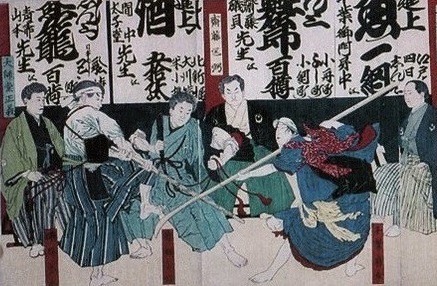Shikaku (Eligibility Requirements)
To be eligible to test for shodan, a candidate must meet all of the eligibility requirements listed below:
| n | A minimum of twenty-four (24) months training in Shindō Musō-Ryū jōjutsu | |
| n | Participate in a minimum of fifty (50) one-hour jōjutsu training classes since promotion to the rank of ikkyū or twenty-five (25) one-hour training classes since promotion to shodan-ho. |
| n | Be a minimum of 13 years of age** | |
| n | Own and wear a complete keikō-gi (hakama, kaku-obi, iai-uwagi, and tabi) that conforms to Seishin-Kan standards | |
| n | Own and use a bokken and jō that conform to Seishin-Kan standards | |
| n | Consistently exhibit appropriate attitude and behaviour in the dōjō | |
| n | Submit a written request for promotion testing on the prescribed form |
**NOTE: Students below the age of 13 who meet all other requirements
may be promoted to the rank of shodan-ho ("provisional shodan") until
such time as they meet the minimum age requirements for shodan or above.
Thereafter, they must meet the minimum age requirements for each subsequent rank sought.
The reason for these minimum age requirements is that ranking in jōjutsu involves more than just competency in the physical skills of defence with a short staff. There is also the expectation of mental, emotional, and spiritual maturity, as well as life experience, appropriate for each dan rank. A person holding the rank of shodan, for example, has developed suffcient physical skills to kill another human being in battle. It is therefore vital that the holder of such a rank also possess the mental, emotional, and spiritual maturity to decide when taking a human life is justified, as well as to cope with the psychological trauma and other consequences of doing so. A student younger than age 13 who lacks the patience to wait until age 13 to receive the full rank of shodan is ipso facto not mature enough to be awarded that rank.
>back to top


